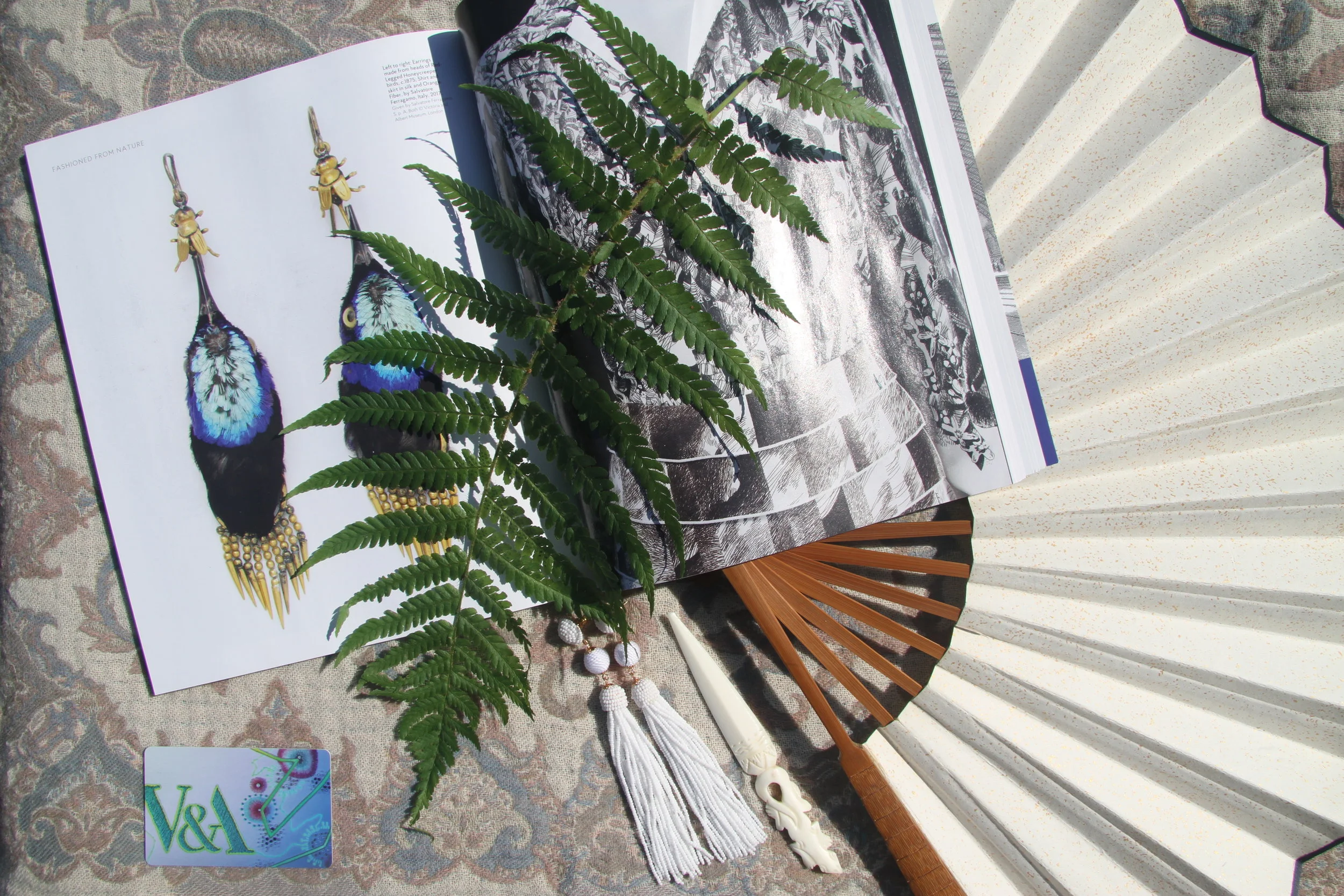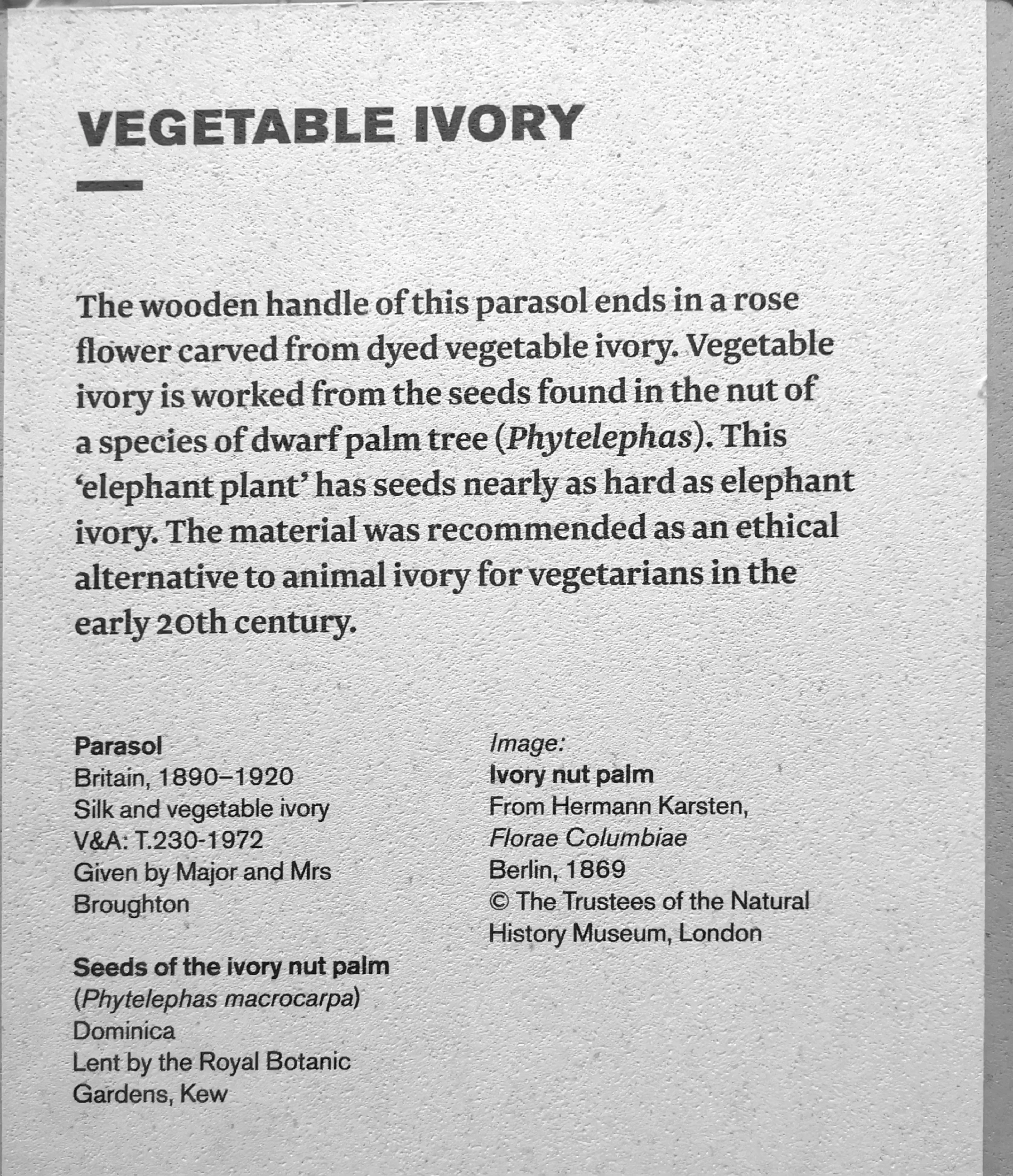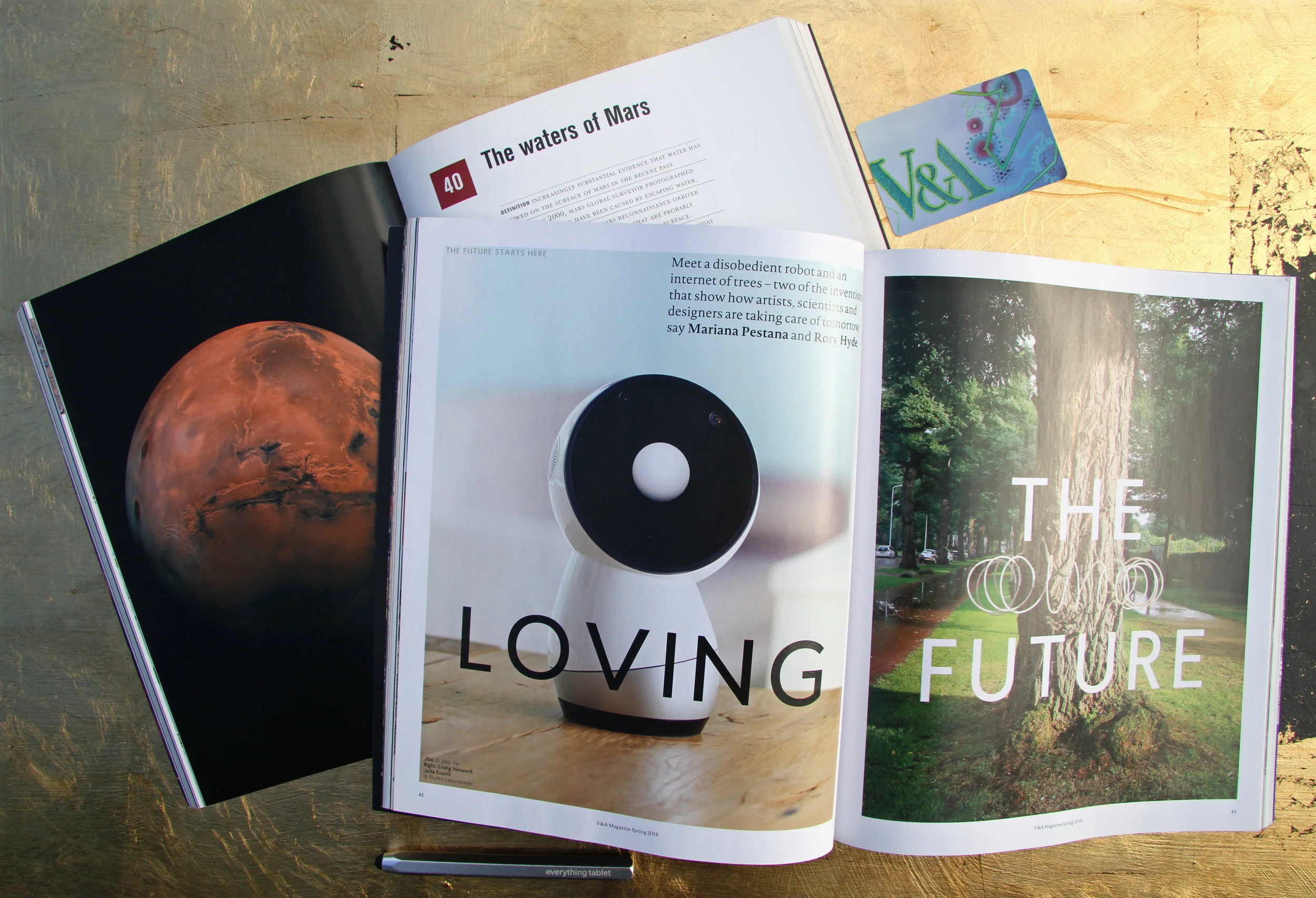Natural Fashion
Dear Diary,
I have been to yet another V&A exhibition, but I confess it won't be the last either! I went to see the 'Fashioned from Nature' exhibit, twice actually. At the beginning I had no intention of going, as it was about fashion, and I'm the person who doesn't follow modern fashion, but rather opts for neutral or classic design. Pieces that are timeless and have no distinction from which seasonal collection the item is from. So you see I was prejudiced to begin with. Well that all changed when I had some time to spare before meeting a friend in South Kensington, I thought I'd go wonder about my favourite museum. I was walking aimlessly just absorbing the history around me, when something new attracted my attention, which was the entrance to the 'Fashioned from Nature' exhibit. I stared at the entrance for a few seconds, looking back now that probably looked suspect, oh well. Not the first time. Checking the time to see if I could make it before meeting with my friend, I decided 'what the heck, might as well' so I went to buy myself a ticket.
I had my reservations but they were all gone within a minute of my entering. It was not at all what I had expected and I am glad for it. There were many interesting artefacts on display, as well as the history behind them.
The first floor, there are two, was submerged in a gloom, I presume it was to preserve the materials from harmful light. All items were antique and many were very delicate. I will mention those that stuck out the most to me personally.
The feather industry. Who hasn't pretended to be a diva in a feather boa? You? Okey, just me then. Never mind. Feathers were used as decoration for centuries, the exhibition doesn't go through all countries or nations, instead concentrating mainly on fashion in Europe, however not from whence the particular item came from. Example at hand the exotic earrings made from an entire head of a bird, the Red-Legged Honeycreeper. Poor tiny little creature, what kind of a woman would have worn you? A dead little head dangling from her earlobes and gently brushing the soft feathers against her neck as she burst out in laughter at somebody's joke, surrounded by societies most glamorous and influential ton of the day. The bird itself is native to South America.
Next to the earrings was a mannequin standing tall in a white dress. What from a distance appeared as beautiful stitches from glossy green silk, upon closer inspection turned out to be beetle wings. They are a gorgeous shade of green and the lighting didn't do them any justice. Some wings, in a different light, shift from green to blue or yellow or red, like spilled oil. The wings belong to an Asian species called Sternocera aequistignata, and don't worry no beetle was harmed in the process it is simply a by-product. During the Victorian era it became popular to adorn dresses and other clothing items with this unusual and fragile decoration. Even today you can still find these green beetle wings online to work on your own projects. If you would like to see the process please check out Angela Clayton, who's videos I encountered by chance and enjoyed ever since. I watched the video she made in which she stitches on the beetle wings way before visiting the exhibition and was pleasantly surprised and reminded of Angela's work when I saw the dress. Follow the link to watch her talented work!
The Mad Hatter: "Have I gone mad?"
Alice: "I'm afraid so. You're entirely bonkers. But I'll tell you a secret. All the best people are."
-Lewis Carroll, Alice in Wonderland
Have you ever wondered where the phrase 'Mad as a hatter' comes from? Well it turns out it was a reference to a time when hat makers used mercury to treat the hat felt. Or so it is presumed. We all know that mercury is highly poisonous and the effect of which has various symptoms, some of which can resemble insects crawling on or under the skin. Who can stay sane with that sensation? This is why the hat that is on display at the museum is contained in a bag to prevent the remaining toxins from escaping.
That colour! So old and yet still so vibrant, can you believe it? And better yet it's a by-product from tar. I love it when you can use every part of an item or material, it's why I collect all sorts of things for my crafting. But this is on another level. A new colour dye has been invented but not for the reasons you might think. William Perkin was in fact looking for another way to treat malaria, experimenting with the thick sludge by-product of coal tar. Instead he found a new way to create a colour. As you know during the Victorian era coal was indispensable, there was plenty of by-product which in turn made the production of the new purple colour through this manufactured process a lot cheaper. Read more about Sir William Perkin and his chemical experimentation with aniline which led to the creation of the purple dye also known as mauveine that you see above, here.
The vast richness of nature and all that we can derive from it does not stop here. I, for example, never thought that pineapple fibres could be used in the making of delicate and almost transparent items such as a handkerchief. It is plant based yet durable, it was said at the exhibition that the fibre is used to this day, but I think not as widely as it could potentially be.
Another example is the vegetable ivory. It warms my heart knowing that people even then had understood the devastation to elephants from hunting them down for their ivory, and had successfully found a substitute. A nut. Granted you may be limited in size, depending on the actual size of the dwarf palm tree nut, but the cruelty free sourcing of it was only a benefit. It is a shame that to this day we have not eradicated the problem of animal hunting for ivory. As humans we are failing these species.
I seriously recommend going to this exhibition at the V&A. There is so much to learn and many artefacts to see up close. The whole of the upper floor is dedicated to modern fashion influenced by nature. There are items from recycled pieces sewn together to create an entirely new piece. Clothing from recycled plastic, like the black and white number worn my Emma Watson to the MET Gala in 2016. The wonderful, oh so real looking, vegetable leather bag by the talented and forward thinking Stella McCartney. Honestly I'd own one.
There is a humble mention about knitting and in my opinion not enough emphasis was made on handmade fashion. I love the satisfaction of making a clothing item that could be worn again and again. Should the style be out of fashion, if you follow the mode (French for fashion), then you can always unravel the yarn and create something new. The act of knitting or crocheting also happens to be very relaxing. This constant reusing is what I mean when I say that I'm a collector of items. I don't like throwing away clothes just because there is a tear or it no longer fits me. My recycling clothing projects include but not limited to, making a skirt from a silk tunic which had unfortunately suffered the discolouration on one of its arms due to the sun and an old pair of jeans that were out of fashion and missing a few of its diamontés, had now become a pair of cropped jeans with tassels. But I'm veering off the subject. I will end this entry on sequins and their never ending beauty and potential. Just look at the dress below and think on how much effort had gone into creating this piece of art, every minute was worth it. Enjoy!
By the way I have decided that becoming a member was worth while after all and as you can see from the cover image I have included my membership card as well as displaying a page from the members magazine. I'm so happy with my decision, I will come again and again to the V&A and visit the exhibitions as many times as I wish and I hope you will join me.
'Fashioned from Nature' is on until Sunday, 27th January 2019


















